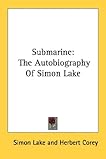 Villains of All Nations: Atlantic Pirates in the Golden Age
Villains of All Nations: Atlantic Pirates in the Golden Age by
Marcus RedikerMy rating:
3 of 5 stars
Villains of All Nations: Atlantic Pirates of the Golden Age by Marcus Rediker as a maritime history is something of a slightly slanted romantic historical portrayal of pirates as noble, albeit flawed, heroes of the proletariat.
The book begins with the July 12, 1726 hanging of pirate William Fly in Boston, for which the infamous Reverend Cotton Mather served as attending clergyman. Rediker attempts to elevate Fly by making him out to be a folk hero fighting a noble but doomed battle against the corrupt establishment as personified by Cotton Mather.
In Mather, a controversial and even hated clergyman, who would later defend the verdicts in the infamous Salem witchcraft trials, Rediker makes Mather out to be the religious voice of a repressive Puritan establishment determined to wield its own terror against the piratical reign of terror during the "Golden Age of Piracy."
Rediker makes good use of Fly's and Mather's remarks to portray pirates as honest men horribly oppressed and driven to desperation by greedy merchants and cruel ship masters. He says of the men like Fly, "They were poor and in low circumstances, but they expressed high ideals."
I very much agree with Rediker about merchant avarice and brutal ship's officers. Until the 20th century, sailors were routinely abused. Indeed, this is still an on-going problem in many parts of the world, particularly in the Pacific. However, defections to pirate crews were not the norm, in spite of the avarice and brutality.
Rediker ends his book with the remarks, "These outlaws led audacious, rebellious lives, and we should remember them as long as there are powerful people and oppressive circumstances to be resisted."
In reading this book, I did find some interesting research which attempted to describe relationships between pirate crews and even quantified the number of pirates during they early 1700s. A chart showing affiliations among some of the well-known pirates was particularly interesting.
However, I did find the glossing over of many of the atrocities committed by "Golden Age" pirates to be very disturbing. Indeed in elevating the likes of Fly to revolutionary heroic stature, Rediker seems to ignore the real men who brought Fly to justice, the sailors Fly impressed from captured vessels. Of these men who rose up and captured Fly, I'd like to re-purpose Rediker's own rhetoric. They were poor sailors and in low circumstances, but they expressed high ideas by being willing to risk their lives to end Fly's reign of terror.
Overall, this is a good read, but be mindful of the writer's agenda.
View all my reviews
 Pirates: Predators of the Seas: An Illustrated History by Angus Konstam
Pirates: Predators of the Seas: An Illustrated History by Angus Konstam
















